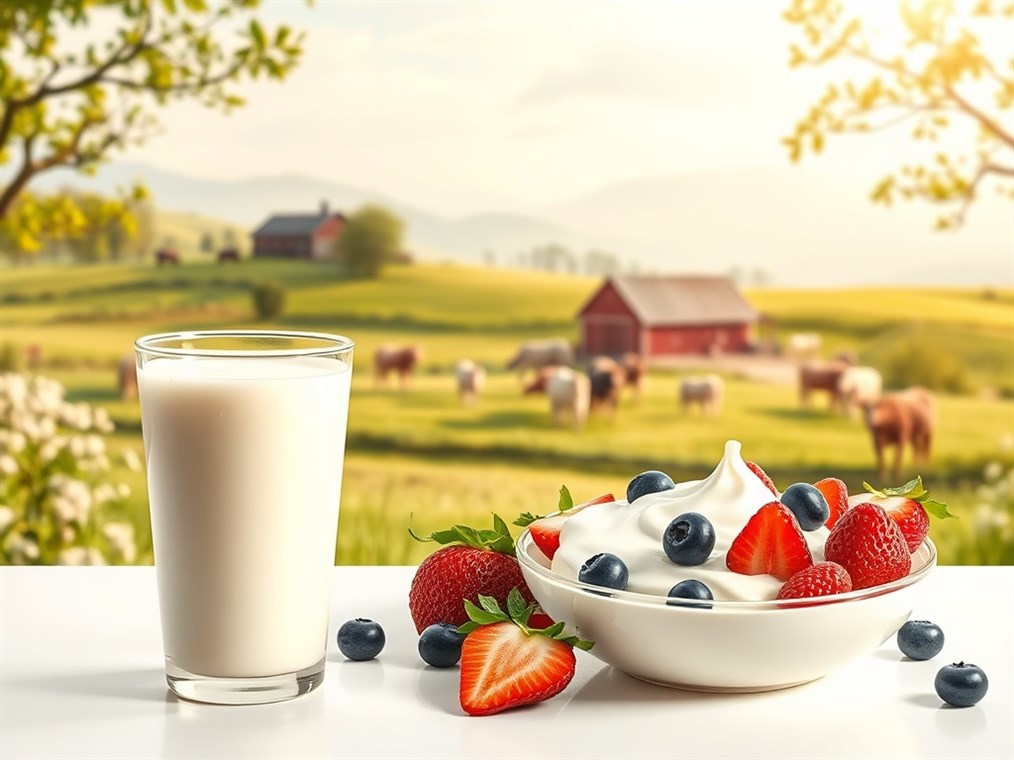Cultured Pasteurized Milk: It’s More Than Just Milk!
Ever wondered what “cultured pasteurized milk” really means? It sounds kinda fancy, right? Well, strip away the jargon, and it’s actually a pretty simple process – and one that gives us some of our favorite dairy treats! It all boils down to two key steps: pasteurization and culturing. Let’s break it down.
First up: pasteurization. Think of it as milk’s safety bootcamp. This process, named after the legendary Louis Pasteur, is all about zapping the bad guys – those pesky microorganisms that can make you sick. Back in the day, Pasteur figured out that heating liquids could prevent spoilage, and the same principle applies to milk today. Basically, milk gets heated to a specific temp for a short time to kill off harmful bacteria like Listeria, Salmonella, and E. coli. The result? Milk that’s safe to drink and lasts longer in your fridge.
There are a few ways to pasteurize milk. You’ve got the old-school method, called batch pasteurization, where milk simmers at 145°F for half an hour. Then there’s the speedier high-temperature short-time (HTST) method, which zaps milk at 161°F for just 15 seconds – this is what you usually see. And for milk with serious staying power, there’s ultra-high temperature (UHT) pasteurization. This heats milk to a scorching 280-302°F for just a couple of seconds, letting it sit unrefrigerated for ages!
Now, here’s a myth buster: despite what you might have heard, pasteurization doesn’t nuke all the nutrients out of milk. So, don’t buy into the hype that pasteurization causes lactose intolerance or robs milk of its goodness.
Okay, so the milk is pasteurized – safe and sound. But what about the “cultured” part? This is where things get really interesting. Culturing, or fermentation, is like throwing a party for good bacteria in the milk. These friendly little guys chow down on lactose (the natural sugar in milk) and turn it into lactic acid. This is what gives cultured milk that signature tangy flavor. But it’s not just about taste! This process also creates probiotics, which are fantastic for your health.
So, put it all together: cultured pasteurized milk is milk that’s been pasteurized to kill the bad stuff and then cultured with good bacteria to boost flavor, texture, and health benefits. Pretty neat, huh?
Think about all the delicious things made with cultured pasteurized milk! Yogurt, with its creamy texture and slightly sour taste, is a classic example, all thanks to Lactobacillus bulgaricus and Streptococcus thermophilus. Then there’s kefir, a tangy, drinkable yogurt packed with a whole zoo of beneficial bacteria and yeasts. And who can forget buttermilk? Traditionally a byproduct of butter-making, nowadays it’s often made by fermenting milk. Sour cream, dahi (that staple in Indian kitchens), and refreshing lassi drinks all owe their unique character to this process, too.
Speaking of benefits, cultured milk is a bit of a health superstar, mainly because of those probiotics. They can work wonders for your gut, helping to balance your gut flora, improve digestion, and even reduce inflammation. Plus, they can help you absorb nutrients better! And for those who are a bit sensitive to lactose, the fermentation process breaks it down, making cultured dairy products easier to digest. Some studies even suggest that probiotics can give your immune system a little boost.
So, what’s the real difference between regular pasteurized milk and the cultured kind? Well, pasteurization is all about safety, while culturing is about adding flavor and benefits. Pasteurization wipes the slate clean, killing off all bacteria (good and bad), while culturing introduces specific probiotics to do their thing. This results in a tangier taste and a thicker texture. And of course, the added probiotics bring a whole host of health benefits to the table.
Ultimately, cultured pasteurized milk is a healthy and versatile choice for most people. Those probiotics can be a real boon for your digestion and overall well-being. That being said, if you have any specific health concerns, it’s always a good idea to chat with your doctor or a registered dietitian to see if cultured milk fits into your diet.

